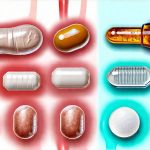Bladder issues are surprisingly common among women, often impacting quality of life in subtle but significant ways. Many factors contribute to bladder sensitivity and urgency – hormonal changes, pelvic floor weakness, infection, and even diet play a role. While many focus on strengthening exercises or medical interventions, the connection between what we eat and how our bladders function is frequently overlooked. Understanding which foods can potentially aggravate the bladder isn’t about strict elimination; it’s about informed choices that empower women to manage their symptoms and improve overall well-being. This article will explore common dietary culprits and provide insights into navigating a more bladder-friendly lifestyle, focusing on practical steps rather than restrictive rules.
It’s important to remember that everyone reacts differently. What triggers one woman’s bladder may not affect another. Individual sensitivity levels vary widely, influenced by pre-existing conditions, overall health, and even stress levels. This means experimentation and careful observation are key to identifying personal triggers. Keeping a food diary alongside tracking symptoms can be incredibly helpful in pinpointing problematic foods. Furthermore, this isn’t about deprivation; it’s about finding balance and making mindful adjustments that support bladder health without sacrificing enjoyment of food. The goal is always to manage, not eliminate, the things we love.
Common Dietary Aggravators
Certain foods and beverages are more frequently associated with bladder irritation due to their chemical composition or effect on the body. These aren’t inherently “bad” but understanding how they can impact bladder function is crucial for women experiencing issues like urgency, frequency, or discomfort. Acidic foods are a primary concern because acidity directly irritates the bladder lining. Similarly, caffeinated and carbonated drinks increase fluid intake (leading to more frequent urination) and can also act as bladder stimulants. Artificial sweeteners, while seemingly harmless alternatives to sugar, have been linked to increased bladder sensitivity in some individuals. Exploring high-vitamin c foods might offer a solution for Vitamin C intake without the acidity.
Beyond acidity, certain food families – like tomatoes, citrus fruits, and spicy foods – contain compounds that can directly irritate the bladder. The capsaicin in chili peppers, for example, is a known irritant. However, it’s important not to assume these are universally problematic; many women tolerate them without issue. It’s more about recognizing if your body reacts negatively. Additionally, alcohol acts as a diuretic, increasing urine production and potentially exacerbating bladder symptoms. The specific type of alcohol doesn’t necessarily matter as much as the quantity consumed.
Finally, artificial colors and preservatives found in processed foods can also contribute to bladder irritation for some individuals. These additives often lack nutritional value and may contain chemicals that trigger inflammation or sensitivity. While identifying these triggers requires careful label reading and potentially eliminating processed foods for a period of time, it can yield significant improvements for those sensitive to them. The key takeaway is recognizing the potential link between diet and bladder health and exploring personalized adjustments based on individual experiences. Consider safe seasonal foods as a starting point for dietary changes.
Understanding Bladder Irritation Mechanisms
The bladder itself is a relatively simple organ, but its function is complex and easily disrupted. When foods or beverages irritate the bladder lining, it triggers an inflammatory response. This inflammation increases sensitivity and leads to the characteristic symptoms of overactive bladder – urgency (a sudden, compelling need to urinate), frequency (urinating more often than normal), and sometimes pain or discomfort. The process isn’t instantaneous; it can take time for irritation to build up and manifest as noticeable symptoms.
Furthermore, the nervous system plays a crucial role. When the bladder is irritated, signals are sent to the brain, increasing the perception of urgency even when the bladder isn’t full. This creates a vicious cycle where anxiety about urination exacerbates the problem. Dehydration can worsen this situation, as concentrated urine further irritates the bladder lining. Conversely, excessive fluid intake – particularly of irritating beverages – amplifies symptoms.
The impact extends beyond just the bladder itself. A weakened pelvic floor—common after childbirth or with age—can contribute to instability and increased urgency. Dietary changes alone won’t fix a weak pelvic floor, but they can help manage symptoms while other interventions (like physical therapy) are underway. Essentially, dietary adjustments are one piece of a larger puzzle in managing bladder health. Fitness plans designed to support pelvic floor health can be beneficial alongside diet changes.
Foods to Be Mindful Of
- Citrus Fruits & Juices: Oranges, grapefruits, lemons, and limes contain citric acid which is a known bladder irritant for many women. While Vitamin C is essential, sourcing it from less acidic sources might be preferable.
- Tomatoes & Tomato-Based Products: Similar to citrus fruits, tomatoes are naturally acidic. Sauces, ketchup, and even tomato juice can contribute to irritation.
- Spicy Foods: Chili peppers, curry, and other spicy seasonings contain capsaicin, which can directly irritate the bladder lining and trigger urgency.
- Caffeinated Beverages: Coffee, tea, energy drinks, and some sodas stimulate the bladder and increase urine production. Decaf options may be a better choice for sensitive individuals.
- Carbonated Drinks: The bubbles in soda and sparkling water stretch the bladder, potentially leading to increased frequency and urgency.
- Artificial Sweeteners: Aspartame, saccharin, and sucralose have been linked to bladder sensitivity in some studies. Opting for natural sweeteners or reducing overall sweetness can be helpful.
It’s essential to approach this list with caution. Start by eliminating one food at a time to see if it makes a difference, rather than attempting a drastic overhaul of your diet. Keeping a detailed food diary is invaluable during this process. Note what you eat and drink, as well as any associated bladder symptoms. This will help identify your specific triggers.
Hydration Strategies for Bladder Health
Adequate hydration is vital for overall health, but the amount and type of fluids consumed can significantly impact bladder function. While it seems counterintuitive, restricting fluid intake can actually concentrate urine and worsen irritation. The goal isn’t to drink less; it’s to drink smartly. Aiming for around six to eight glasses (8oz each) of water per day is a good starting point, but adjust based on your activity level and climate.
- Prioritize Water: Plain water is the best choice for bladder health as it doesn’t contain irritating additives or chemicals.
- Space Out Fluid Intake: Instead of drinking large amounts at once, sip fluids throughout the day to avoid overwhelming the bladder.
- Limit Irritating Beverages: Reduce consumption of coffee, tea, soda, alcohol, and citrus juices. Consider herbal teas as an alternative, but be mindful of potential sensitivities.
- Avoid Drinking Before Bed: Reducing fluid intake a few hours before bedtime can minimize nighttime urination.
It’s also important to note that the temperature of fluids might matter for some individuals. Some women find cold beverages exacerbate their symptoms, while others prefer them. Pay attention to your body’s response and adjust accordingly. Finally, remember that hydration needs vary; listen to your thirst cues and don’t force yourself to drink if you’re not thirsty.
Practical Steps & Long-Term Management
Managing bladder irritation is an ongoing process that requires self-awareness and consistent effort. It isn’t about a quick fix but rather adopting sustainable habits that support long-term health. Start by keeping a detailed food diary for at least two weeks, recording everything you eat and drink alongside any associated bladder symptoms. This will help identify potential triggers.
- Elimination Diet: Once you have identified potential irritants, try eliminating one food at a time for a week or two to see if your symptoms improve.
- Reintroduction Phase: If eliminating a food reduces your symptoms, slowly reintroduce it in small amounts to assess your tolerance level.
- Pelvic Floor Exercises (Kegels): Strengthen the pelvic floor muscles to improve bladder control and reduce urgency. Consult with a physical therapist specializing in pelvic health for personalized guidance.
- Stress Management: Stress can exacerbate bladder symptoms. Incorporate relaxation techniques like yoga, meditation, or deep breathing exercises into your routine.
Finally, don’t hesitate to consult with a healthcare professional – a doctor or registered dietitian – if you’re struggling to manage your symptoms on your own. They can provide personalized advice and rule out any underlying medical conditions. Remember that managing bladder health is about empowerment and taking control of your well-being through informed choices and consistent self-care. Understanding acidic foods impact can be a key step in management.





















